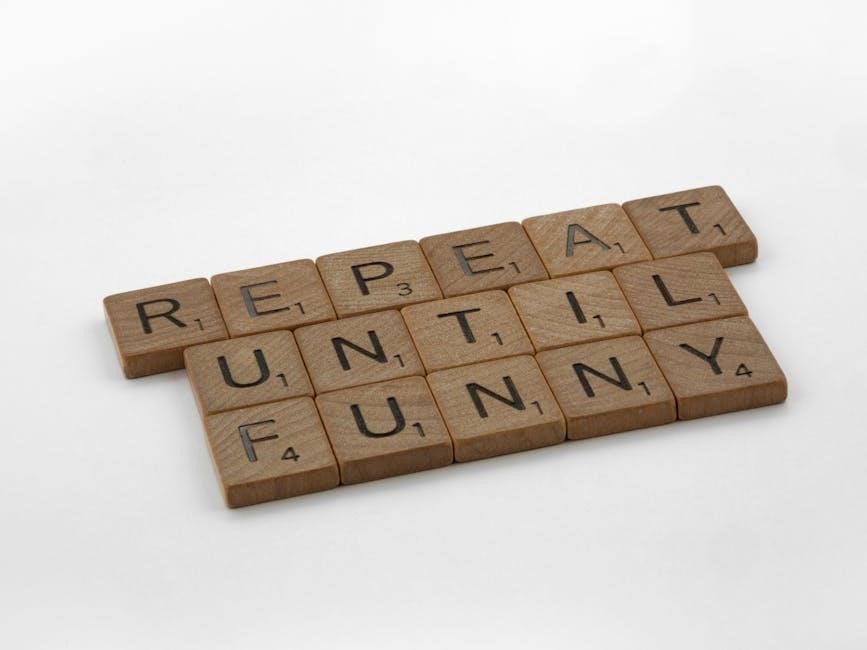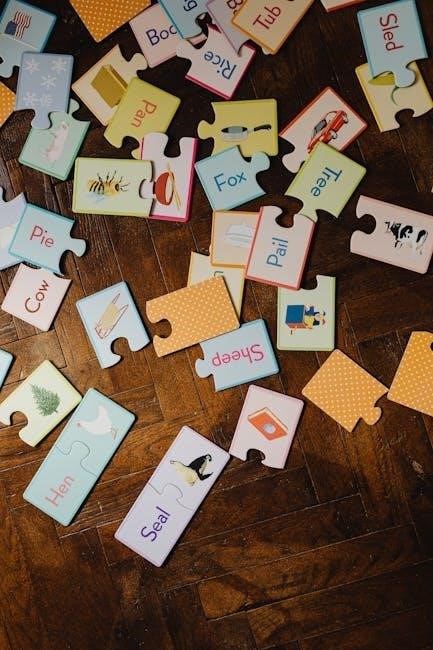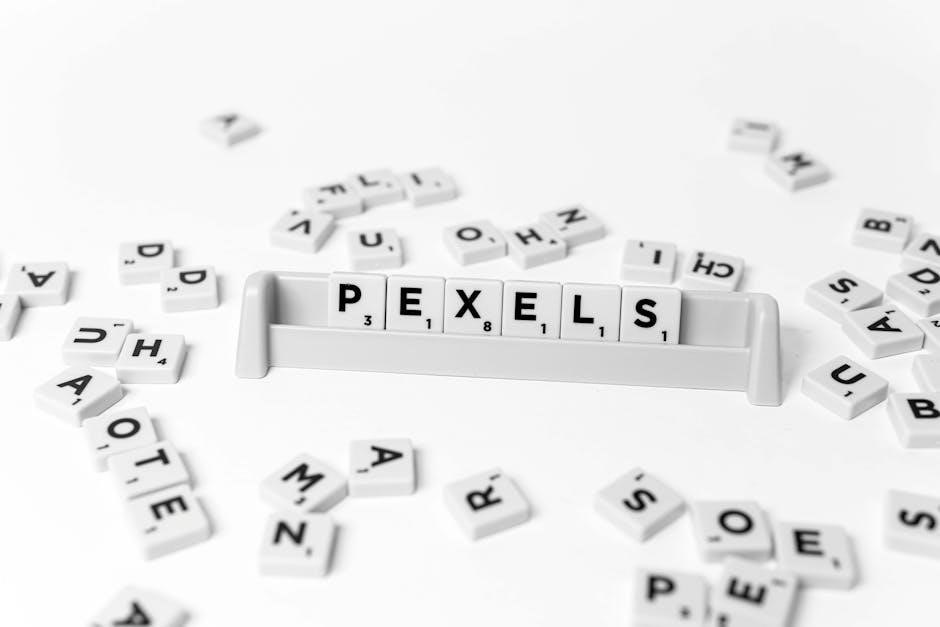Transition words are essential for connecting ideas in writing‚ enhancing clarity and coherence. They guide readers through sentences and paragraphs‚ showing relationships like addition‚ contrast‚ or cause.
What Are Transition Words?
Transition words are specific words or phrases that connect ideas‚ sentences‚ and paragraphs. They help establish relationships like addition‚ contrast‚ cause‚ and sequence. Examples include “first‚” “however‚” and “therefore.” These words guide readers through logical flow‚ ensuring clarity and coherence in writing. Transition words are essential for smooth transitions between ideas‚ making writing more organized and easier to follow. They signal the relationships between different parts of a text‚ helping readers understand the author’s message more effectively. Proper use of transition words enhances the overall quality of writing‚ making it more engaging and understandable for readers. Transition words exercises PDF with answers are valuable tools for mastering their correct usage in various contexts. These exercises often include fill-in-the-blank activities‚ matching exercises‚ and multiple-choice questions‚ covering different types of transitions like additive‚ adversative‚ causal‚ and sequential. They provide learners with the opportunity to practice and reinforce their understanding of how to use transition words appropriately in sentences and essays. The availability of answers allows for self-assessment and immediate feedback‚ which is crucial for improving writing skills. By practicing with these exercises‚ individuals can become more confident in their ability to use transition words effectively‚ leading to clearer and more compelling written communication. Transition words exercises PDF with answers are particularly useful for students and educators seeking structured practice materials to enhance writing proficiency. They offer a comprehensive way to learn and apply transition words in diverse writing scenarios‚ ensuring that learners can express their ideas cohesively and logically. Regular practice with these exercises helps develop the skill of using transition words naturally and appropriately‚ which is an essential aspect of effective writing. Transition words exercises PDF with answers are a practical resource for anyone looking to improve their writing skills and master the use of transition words in various contexts. They provide a clear and structured approach to learning‚ making the process both efficient and effective. With consistent practice‚ learners can significantly enhance their ability to connect ideas smoothly and maintain a logical flow in their writing. Transition words exercises PDF with answers are an invaluable tool for achieving this goal and becoming a proficient writer.
Importance of Transition Words in Writing

Transition words are crucial for ensuring clarity‚ coherence‚ and logical flow in writing. They help readers understand the relationships between ideas‚ making texts easier to follow. Without transition words‚ sentences and paragraphs can seem disconnected‚ leading to confusion. These words act as bridges‚ guiding readers through the writer’s thoughts and ensuring a smooth progression of ideas. Proper use of transition words enhances the overall quality of writing‚ making it more engaging and professional. They are particularly important in academic and formal writing‚ where clear communication of complex ideas is essential. Transition words exercises PDF with answers provide learners with practical tools to master their use‚ improving writing skills and fostering effective communication. Regular practice with these exercises helps develop the ability to connect ideas seamlessly‚ resulting in more polished and coherent writing. Transition words are indispensable for writers seeking to convey their ideas with precision and impact.
Types of Transition Words
Transition words are categorized into types like additive‚ adversative‚ causal‚ and sequential. Additive words (e.g.‚ “Additionally‚” “Moreover”) add ideas‚ while adversative words (e.g.‚ “However‚” “On the Other Hand”) show contrast. Causal words (e.g.‚ “Therefore‚” “As a Result”) indicate cause-effect relationships‚ and sequential words (e.g.‚ “First‚” “Next”) organize events or ideas in order. These categories help writers choose the right word for clear and effective communication. Transition words exercises PDF with answers provide practice in identifying and using these categories correctly‚ enhancing writing skills and overall expression. Regular practice ensures mastery of these essential tools for coherent and impactful writing.
Additive Transition Words (e.g.‚ “Additionally‚” “Moreover”)
Additive transition words are used to add information‚ support a point‚ or indicate the inclusion of another idea. Examples include “Additionally‚” “Moreover‚” “Also‚” “Furthermore‚” and “Besides.” These words help writers connect ideas smoothly‚ making their writing more coherent. They are particularly useful for listing points‚ adding evidence‚ or emphasizing details. For instance‚ “Additionally” can be used to introduce a supporting detail‚ while “Moreover” strengthens an argument. Proper use of additive transitions enhances the flow of sentences and makes writing more engaging. Transition words exercises PDF with answers provide ample practice to identify and use these words correctly‚ ensuring learners master their application in various contexts. Regular practice helps improve writing clarity and effectiveness.
Adversative Transition Words (e.g.‚ “However‚” “On the Other Hand”)
Adversative transition words are used to show contrast‚ contradiction‚ or a shift in ideas. Examples include “However‚” “On the other hand‚” “In contrast‚” and “Nevertheless.” These words help writers present opposing viewpoints or unexpected information smoothly. For instance‚ “However” can introduce a contrasting idea‚ while “On the other hand” highlights differences between two perspectives. Transition words exercises PDF with answers often include sentences where learners must select the correct adversative transition to maintain logical flow. Mastering these words enhances the ability to present balanced arguments and clear contrasts‚ improving the overall structure and readability of written content. Regular practice ensures proper usage in various writing scenarios.
Causal Transition Words (e.g.‚ “Therefore‚” “As a Result”)
Causal transition words indicate cause-and-effect relationships or reasoning behind an action. Common examples include “Therefore‚” “As a result‚” “Hence‚” and “Consequently.” These words help writers explain why something happens or clarify the logical flow of ideas. For instance‚ “Therefore” introduces a conclusion based on preceding information‚ while “As a result” shows the outcome of a prior event. Transition words exercises PDF with answers often feature sentences requiring the correct causal transition to link causes and effects. Practicing these words enhances the ability to express logical reasoning and connections‚ making writing more coherent and persuasive. Regular exercise helps learners use causal transitions effectively in various contexts.
Sequential Transition Words (e;g.‚ “First‚” “Next”)
Sequential transition words are used to denote order or sequence in writing or speech. Examples include “First‚” “Next‚” “Then‚” and “Meanwhile.” These words guide the reader through a series of events‚ steps‚ or ideas‚ ensuring clarity and coherence. For instance‚ “First‚ gather the materials; next‚ follow the instructions.” Transition words exercises PDF with answers often include sentences where learners must identify or insert the correct sequential word. These exercises help improve the ability to organize ideas logically and enhance readability. Regular practice with sequential transitions enables writers to structure their content more effectively‚ making it easier for readers to follow along.

Transition Words Exercises PDF
These exercises provide practice in using transition words effectively. They include fill-in-the-blank‚ matching‚ and multiple-choice questions‚ with answers to help learners improve their skills.
Fill-in-the-Blank Exercises
Fill-in-the-blank exercises are an excellent way to practice using transition words. Sentences with missing transitions are provided‚ and learners must choose the correct word to complete them. These exercises often cover various contexts‚ such as adding information‚ contrasting ideas‚ or showing cause and effect. For example‚ a sentence might read‚ “She wanted to go to the park‚ ________ the weather was rainy.” The correct transition could be “but” or “however.” Answer keys are included to help learners verify their choices and understand proper usage. These exercises improve sentence structure and coherence‚ making writing more fluid and readable. Regular practice enhances the ability to use transitions naturally.
Matching Exercises
Matching exercises are another effective way to practice transition words. These exercises typically present two columns: one with sentences and the other with transition words. Learners match the correct transition word to the sentence where it fits best. For example‚ a sentence like “I studied hard‚ ________ I got an A on the test” might be paired with “therefore” or “as a result.” These exercises help learners understand the relationships between ideas and choose appropriate transitions. Answer keys are provided to verify responses. Regular practice improves the ability to select the right transition for different contexts‚ enhancing writing clarity and flow. These exercises are especially useful for visual learners who benefit from organizing information spatially.
Multiple-Choice Questions

Multiple-choice questions are a popular format for practicing transition words. Each question typically presents a sentence with a missing transition word and offers three to four options. Learners must choose the most appropriate transition to complete the sentence. For example‚ “She studied for hours; ________‚ she felt confident about the exam” might include options like “however‚” “therefore‚” or “meanwhile.” These exercises test understanding of context and logical connections. Answer keys are provided to check responses. Regular practice with multiple-choice questions helps learners develop a stronger grasp of transition word usage. Over time‚ this improves sentence coherence and enhances writing skills in both academic and professional contexts.

Answer Keys and Solutions

The section provides clear answers to exercises‚ with detailed explanations for correct and incorrect options. It helps users verify responses and understand common mistakes.
Step-by-Step Solutions for Exercises

This section offers detailed‚ step-by-step explanations for each exercise‚ ensuring users understand the logic behind correct answers. Each solution breaks down the problem-solving process‚ explaining why certain transition words fit specific contexts. By analyzing sentence structure‚ context clues‚ and the flow of ideas‚ learners can grasp how to apply transition words effectively. The solutions emphasize understanding over memorization‚ providing a clear rationale for every answer. This approach helps users improve their ability to identify and use appropriate transition words in various sentences and paragraphs. Regular practice with these solutions enhances writing clarity‚ coherence‚ and overall communication skills.
Common Mistakes to Avoid
One of the most frequent errors is overusing transition words‚ which can make writing feel cluttered. Learners often misuse words like “however” or “therefore” without ensuring they logically connect ideas. Another mistake is using transitions too close together‚ disrupting the flow of a sentence. Some writers incorrectly pair transition words with punctuation that doesn’t match their function. Additionally‚ relying on the same transition words repeatedly can weaken the clarity of a text. It’s important to proofread and ensure each transition word serves a clear purpose. Avoiding these mistakes enhances the effectiveness of transitions and improves overall writing quality.
Identifying Transition Words in Context
This section helps learners identify transition words within passages and sentences‚ improving comprehension and writing clarity through targeted exercises and examples.
Reading Comprehension Exercises
Reading comprehension exercises are essential for mastering transition words. These exercises provide passages with intentionally inserted transition words‚ allowing learners to identify and analyze their usage in context. By reading short paragraphs or essays‚ students can locate transition words like however‚ additionally‚ or therefore and understand how they connect ideas. Some exercises include questions asking learners to explain the function of specific transition words or rewrite sentences using alternative transitions. This practice enhances both comprehension and writing skills‚ helping learners grasp how transitions improve the flow of text. Regular exposure to these exercises builds familiarity and confidence in using transition words effectively in various contexts.
Identifying Correct Transition Words in Sentences
Identifying correct transition words in sentences involves analyzing the relationships between ideas. Transition words like however‚ additionally‚ or therefore signal how sentences connect. To identify them‚ read the sentence carefully and determine the logical relationship: is it contrast‚ addition‚ cause-effect‚ or sequence? For example‚ in “I wanted to go to the park‚ but it rained‚” but indicates contrast. Exercises often include sentences with missing transitions‚ asking learners to choose the most appropriate word. This practice improves understanding of how transitions clarify and strengthen writing. Regular identification drills help learners recognize and apply transition words accurately in their own writing. Mastery of this skill enhances coherence and readability in texts.

Advanced Transition Words

Advanced transition words like consequently‚ notwithstanding‚ and thereby enhance complex writing by connecting ideas seamlessly. They are ideal for essays and formal documents‚ ensuring sophisticated expression and clarity.

Using Transition Words in Complex Sentences
Transition words are essential for constructing complex sentences‚ as they connect ideas logically and ensure smooth readability. In intricate writing‚ words like consequently‚ however‚ or therefore help bridge independent and dependent clauses. For example‚ in a sentence like‚ “While the project was challenging‚ nevertheless‚ the team managed to complete it on time‚” the transition word nevertheless highlights contrast. Advanced transition words like notwithstanding or in light of add sophistication. Practicing with exercises from a PDF can help master these transitions‚ enabling writers to craft coherent‚ nuanced sentences that convey complex ideas with clarity and precision.
Transition Words for Essays and Formal Writing
Additional Resources
Find comprehensive transition words exercises PDF with answers on educational websites‚ language learning apps‚ and platforms like Grammarly‚ Khan Academy‚ or Coursera for enhanced practice.
Where to Find Transition Words Exercises PDF
To locate transition words exercises PDF with answers‚ explore educational websites like Google Classroom‚ Google Drive‚ or Teachers Pay Teachers; Many language learning platforms offer free downloadable resources. Websites such as Khan Academy‚ Coursera‚ or Grammarly often provide exercises tailored for skill improvement. Additionally‚ platforms like Etsy or academic forums may have compilations of worksheets. Search for “transition words exercises with answers PDF” on Google to find direct links to downloadable materials. Ensure the sources are reputable for quality content. These resources are ideal for self-study or classroom use‚ catering to various proficiency levels.
Online Tools for Practicing Transition Words
Several online tools are available to practice transition words exercises effectively. Websites like Quizlet offer interactive flashcards and tests to master transition words. Khan Academy provides grammar exercises‚ including sections dedicated to transition words. Additionally‚ tools like Grammarly can help identify and correct improper transitions in sentences. Platforms such as PerfectEnglish and EnglishPage offer specific exercises and quizzes to improve your understanding. These tools are user-friendly and cater to different learning styles‚ making them ideal for self-practice or classroom assignments. Regular use of these resources can significantly enhance your writing and communication skills.
Transition words are essential for clear‚ coherent writing. Regular practice with exercises and resources will enhance your skills. Keep improving to communicate effectively in all contexts.
Summarizing the Importance of Transition Words
Transition words play a vital role in enhancing the clarity and coherence of written and spoken communication. They connect ideas‚ signal relationships between sentences‚ and ensure a smooth flow of information. Using appropriate transition words helps writers present their arguments logically‚ making their content more engaging and easier to understand. In academic and professional settings‚ transition words are essential for producing polished‚ professional documents. Regular practice with exercises‚ such as those found in PDF resources‚ can significantly improve one’s ability to use transition words effectively. Mastery of these words is a key skill for effective communication‚ enabling individuals to convey their ideas with precision and impact.
Encouragement to Practice Regularly
Regular practice is essential to master the use of transition words effectively. Consistent exercise helps develop a stronger command of these words‚ improving writing clarity and coherence. By using transition words exercises PDF with answers‚ learners can identify areas for improvement and track their progress. Even short daily practice sessions can lead to significant improvement over time. Encourage learners to explore various resources‚ such as PDF guides‚ to enhance their skills. The more one practices‚ the more natural and effective their use of transition words will become. Make practice a habit to achieve fluency and confidence in communication.









